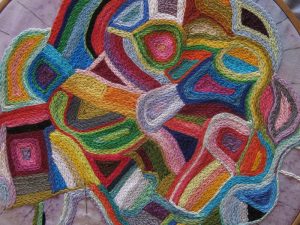Street Children’s Movement in Brazil
In 1989, over 700 street children took over the Brazilian National Congress and symbolically enacted a law protecting the rights of children and youth. The takeover was the culmination of a long process of movement-building led by the National Movement of Street Boys and Girls (Movimento Nacional de Meninos e Meninas de Rua—MNMMR). This campaign by the most impoverished of children forced the Brazilian congress to adopt protections for children and youth into the Constitution.
The unprecedented movement for change led by children was possible because educators and youth workers in Brazil reexamined their view of youth. They recognized that punitive practices were not solving any problems and invited the youth to join in reflective circles to talk. The youth workers realized the problem was the commonly held view that youth should be acted upon rather than in mutual partnership. The shift in perception and practice allowed new forms of partnerships to emerge. It allowed adults to support youth in creating their own organizations and structures and in developing the mechanisms to solve their own problems through the tools of organizing and citizenship.
The educators’ new framework centered on MNMMR’s “fundamental principle of action.” This principle held together diverse movements and formed the basis for creating effective and empowering relationships between adult allies and street children:
“Children and adolescents must be regarded as human beings in a particular developmental stage; citizens, subject to legitimate rights, who should participate in decisions about their lives, their communities and society in general.”
This core principle was identified through a process in which educators:
- reflected deeply on their experiences and practice,
- merged effective practices and common principles, and
- concentrated resources and reflective practice locally, to foster local change that could build to movements at the national level.
Educators developed new structures and processes based upon these principles and also encouraged street children to develop their own independent mobilizing structures, called nuclei, as a means to express their own solutions for themselves. Creating separate structures acknowledged youth had their own abilities. MNMMR also convened educators and young people separately for training and general learning. By having independent gatherings of youth workers and youth, the two groups were able to work more effectively when they came together.
Through its historic efforts, MNMMR has demonstrated that the most marginalized groups of young people can influence decision-makers at the highest levels of power, when given the right kinds of support from youth workers and educators.
U.S. Youth Movement
During the last decade, the U.S. has witnessed the growth of a dynamic and diverse youth movement. For example, in the late 90s thousands of youth led a series of walkouts to protest the under-funding of education in California and the state’s over-investment in incarceration. Last year thousands of youth in California took to the streets and engaged in civil disobedience to protest against the corporations that funded Proposition 21—an initiative that further criminalized youth—and they had a huge impact on public consciousness and voters around the state.
This youth movement is being built not only through mass mobilizations of young people and their supporters but through smaller-scale campaigns. Young people are organizing around “youth issues” such as education and juvenile justice and around broader community issues, such as housing, welfare reform and environmental justice.
Young people around the country are writing laws, getting school clinics built, creating youth-run centers, educating the public about propositions that impact their lives, defeating curfew laws, changing school curricula to make them more reflective of our diverse communities, working to stop dumping and other forms of environmental racism, and, in the process, becoming players in city halls, school boards, and state capitals around the country. Young people are learning how to be citizens by revitalizing democracy.
In Context of Social Movements
Whether youth are working to address problems specifically facing youth or issues affecting the entire community, all youth involved in organizing must confront and overcome the fact that young people are politically disempowered and denied access to the decision-making process. For young people to fight for change on any issue they must also fight to change this imbalance of power. The youth empowerment perspective combines the strategies and insights of community organizing as a way to achieve the goals of youth development, not only for individual youth but also for youth and their communities. Because of this, we can see the youth movement, in all its diversity, as a movement like the women’s movement or the civil rights movement in that it seeks to empower a socially marginalized group.
The youth movement, in its boldest and most prominent expressions, is defined not primarily by age but by values. It is a movement for fairness: the right of all people to self-representation and self-determination. These values are often talked about in our culture but rarely realized in our institutions and daily lives. That hypocrisy—the discrepancy between the rhetoric of America and the brutal reality—is what young people, like the generations before them, are standing up to confront. They are confronting daily injustice in the most intimate and immediate ways, by looking at their relationships with adults such as police officers, underpaid and poorly trained teachers, parents working multiple jobs with little time left to share with children, and politicians and “the public” intent on over-investing in their incarceration.
Sign up for our free newsletters
Subscribe to NPQ's newsletters to have our top stories delivered directly to your inbox.
By signing up, you agree to our privacy policy and terms of use, and to receive messages from NPQ and our partners.
We are seeing the potential of the beginning of a new national movement. For young people, the fight to increase support for youth in community development against the rising public investment in punishment and prison is a fight for their lives. The cry is for schools and parks, not prisons; books, not bars; more teachers, counselors and nurses in their schools, not more police officers. Society has denied young people the basic supports they need to develop and is investing exorbitant public resources to punish them for the nation’s neglect. Adults in the U.S. have failed to turn the tide of the current social and political climate against the punitive approach. Now youth have taken it upon themselves to shift public opinion and public policy.
The youth movement is an international social movement; everywhere, young people are recognizing and addressing decisions made without their input. Similarly to the way that the Student Nonviolent Coordinating Committee (SNCC) provided an organizational structure to unify the diverse sit-in movement in the 60s, youth organizing groups have emerged out of informal networks of youth with a new protest culture and inclusive principles and strategies. These diverse efforts are slowly and systematically being knitted together by a host of support institutions into national networks, through which groups are sharing effective practices, celebrating victories, and learning from defeat.
Changing Our Perceptions
The United States has seen an upsurge in youth-led action. As the inspiring example of the Brazilian Street Children’s movement demonstrates, young people can speak for themselves and take action to solve their own problems. This movement occurred because educators and youth workers reexamined their understandings of youth and their practice. To support a vital youth movement in the United States, we must do the same thing.
In the United States the youth field has shifted from a punishment and prevention framework to a developmental framework. This shift offers us a shared experience that can help us take the next step from development to an empowerment framework.
The different definitions of youth in these three frameworks lead to defining problems and solutions in different ways. The prevention perspective often defines youth as “lacking” the ability to protect themselves from danger or make good decisions. Youth problems lie in individual pathology or the culture of their families, and the solutions are education and building resilience in children who live in hostile environments. The youth development perspective believes youth lack access to support and opportunities. The solution is then to provide those supports to the individual to realize their inherent potential. The empowerment perspective goes one step further, identifying our society’s power imbalances as the reason youth are denied access to opportunities. The solution to creating opportunities for youth then becomes correcting those power imbalances though collective action that transforms community institutions and systems into more caring and supportive environments.
Given the differences between these three approaches, how do we understand the different kinds of youth work? Any organization or project has two important dimensions: first, the level of youth leadership in decision-making and project activity, and second, the primary focus for change. Youth empowerment is work that strives to promote the highest levels of youth leadership in organizing collective action to transform institutions, systems and environments. But youth organizing work also depends on work happening at other parts of the spectrum, work that addresses individuals’ real needs. An organization or a project over a given period of time may do work at different points in the continuum of practice as described above.
Often when looking at youth organizing in relationship to other forms of youth work, people tend to set up false dichotomies in the desire to find the “best way” to support youth and social change. This approach blinds us to the unique and important roles that many forms of youth work play in the lives of young people and in the process of community change. There clearly is important work being done across the spectrum of youth work. Individuals need various forms of opportunities and support.
The work of youth empowerment is essential to youth development because it helps to make youth development possible. Youth development says that young people need to be in healthy environments but does not directly engage young people in transforming their environments to make them more supportive. For young people to complete the developmental process, youth development frameworks need to focus on developing young people as decision-makers, subjects and citizens.
Why Is Empowerment So Hard?
Changing our understanding of young people requires that we directly confront our personal and institutional understandings of youth and our personal and institutional identities as change agents. Our ability to imagine paths to a more human world is limited by the organizational forms in which we operate. Nonprofit organizations are often a vehicle for addressing social inequality but their dependence on government and corporate funds limits their ability to sustain social change movements. Can we re-imagine ourselves and our institutions in ways that give us more room to reshape our world? Social movements offer an array of diverse organizational formations that expand the possibilities for social action. The Brazilian movement did just that—engendered new organizational forms derived from new perception frameworks and approaches to practice.
Young People as Agents of Change
Young people have organized to tell us what they want to see change, and we need to pay attention to what they are doing and ask how we can support them as change agents. If we can continue to create communities of educators, youth organizers and youth workers to engage in dialogue about our perceptions and practice, the youth movement will continue to grow and evolve. (See page 5 for groups around the country working to support youth empowerment.)










